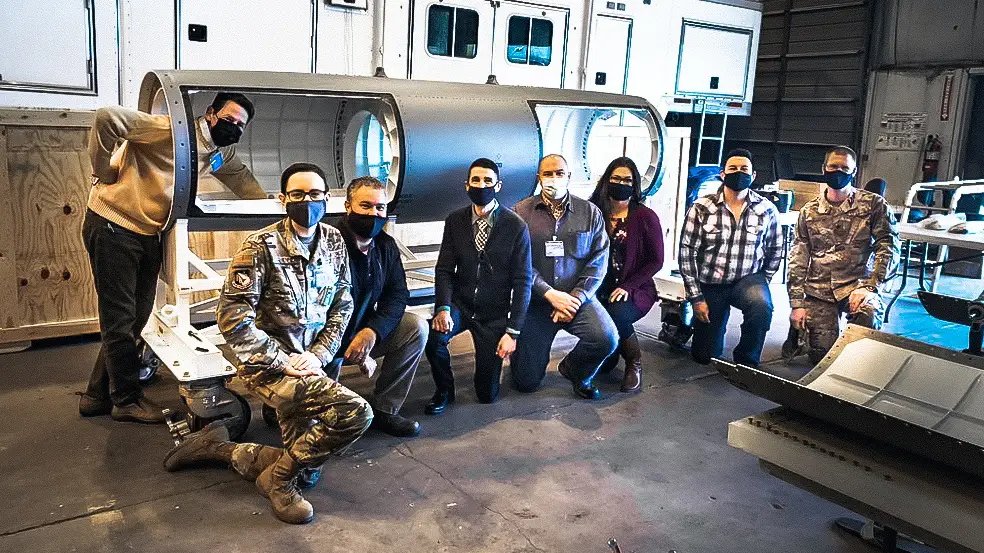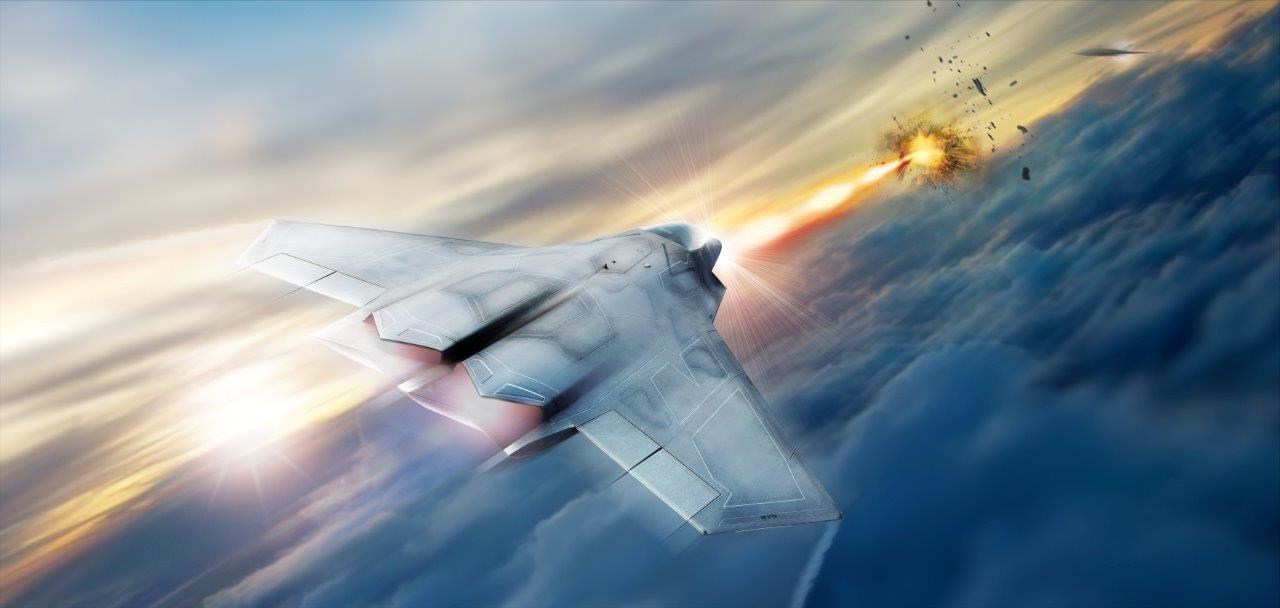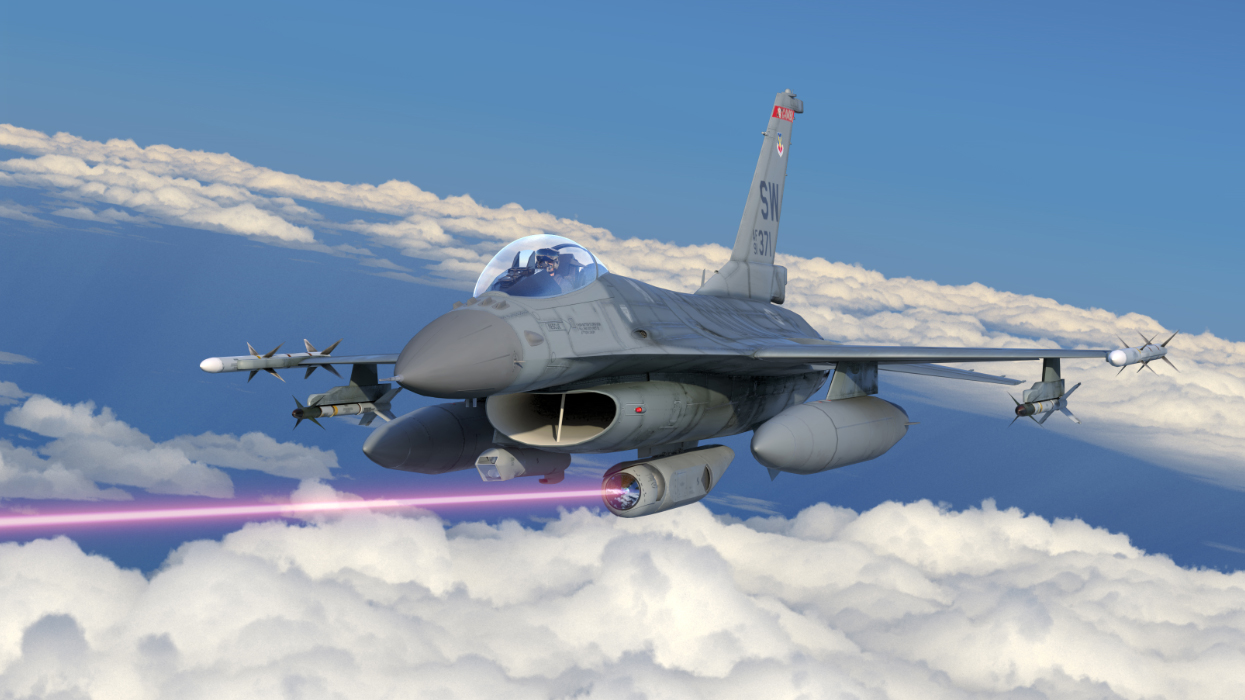The U.S. Air Force has received a high-energy laser weapon that can be carried by aircraft in podded form. The news came today when Lockheed Martin disclosed that at least one of the weapons, which it developed, has been delivered to the Air Force for test work. This effort falls within the wider framework of still-evolving plans to have laser-armed fighter jets that can engage enemy missiles, and possibly other targets too.
A report today from Breaking Defense confirmed that Lockheed Martin delivered its LANCE high-energy laser weapon to the Air Force in February this year. In this context, LANCE stands for “Laser Advancements for Next-generation Compact Environments.” The recipient for the new weapon is the Air Force Research Laboratory, or AFRL, which is charged with developing and integrating new technologies in the air, space, and cyberspace realms.
Tyler Griffin, a Lockheed executive, had previously told reporters that LANCE “is the smallest, lightest, high-energy laser of its power class that Lockheed Martin has built to date.”
Indeed, Griffin added that LANCE is “one-sixth the size” of a previous directed-energy weapon that Lockheed produced for the Army. That earlier laser was part of the Robust Electric Laser Initiative program and had an output in the 60-kilowatt class. We don’t yet know what kind of power LANCE can produce although there have been suggestions it will likely be below 100 kilowatts.

As well as being notably small and light, LANCE has reduced power requirements compared to other previous weapons, a key consideration for a fighter-based laser, especially one that can be mounted within the confines of a pod.
If successful in its defensive mission, it’s feasible that LANCE could go on to inform the development of more offensive-oriented laser weapons, including ones that could engage enemy aircraft and drones at longer ranges than would be the case when targeting a fast-approaching anti-aircraft missile, whether launched from the ground or from an enemy aircraft.
LANCE has been developed under a November 2017 contract that’s part of the Air Force’s wider Self-protect High Energy Laser Demonstrator, or SHiELD, program, something that we have written about in the past.
SHiELD is a collaborative effort that brings together Lockheed Martin, Boeing, and Northrop Grumman. While Lockheed Martin provides the actual laser weapon, in the form of LANCE, Boeing produces the pod that carries it, and Northrop Grumman is responsible for the beam control system that puts the laser onto its target — and then keeps it there.

Kent Wood, acting director of AFRL’s directed energy directorate, told Breaking Defense that the various SHiELD subsystems “represent the most compact and capable laser weapon technologies delivered to date.”
Wood’s statement also indicated that actual test work by AFRL is still at an early stage, referring to “mission utility analyses and wargaming studies” that are being undertaken currently. “Specific targets for future tests and demonstrations will be determined by the results of these studies as well,” he said.
Meanwhile, Lockheed’s Tyler Griffin added that the next stage in the program would see LANCE integrated with a thermal system to manage heating and cooling.
At his stage, we don’t know exactly what aircraft LANCE is intended to equip, once it progresses to flight tests and, hopefully, airborne firing trials. However, Griffin said that “a variety of potential applications and platforms are being considered for potential demonstrations and tests.”
Previous Lockheed Martin concept art has shown the pod carried by an F-16 fighter jet. And, while SHiELD is initially concerned with proving the potential for active defense of fighter jets in high-risk environments, officials have also talked of the possibility of adapting the same technology for larger, slower-moving combat and combat support aircraft, too.

Boeing flew a pre-prototype pod shape — without its internal subsystems — aboard an Air Force F-15 fighter in 2019. During ground tests, meanwhile, a representative laser, known as the Demonstrator Laser Weapon System (DLWS), has already successfully shot down multiple air-launched missiles over White Sands Missile Range in New Mexico, also in 2019.
A decision on the initial test platform for the complete SHiELD system will likely follow once a flight demonstration has been funded, which is currently not the case. Similarly, there is not yet a formal transition plan for how LANCE and SHiELD could evolve into an actual program of record.
As it stands, the timeline for all this work is also unclear, AFRL having told Breaking Defense it was yet to make any decisions on when airborne trials might happen.
Back in late 2017, AFRL said it planned to test a laser on a tactical fighter jet by 2021. Then, in 2020, Lockheed Martin said it was planning to have one of its lasers flying on tactical fighters by 2025.
However, the Air Force has run into some problems with these technologies, with the service announcing last year that it had pushed back the schedule for beginning flight testing of a podded laser weapon by two years to 2023. That delay was attributed both to technical difficulties and work slowdowns related to the COVID-19 pandemic.
In February last year, AFRL announced that it was about to take delivery of the Boeing pod for SHiELD and that it hoped to get the remaining components — including LANCE — by July 2021. The reason for the delay this time is not clear although, in the past, AFRL has described the technical challenges involved in getting a directed-energy laser to down a hostile supersonic missile as “tremendous.”

In the meantime, Air Force pilots have already been flying simulated missions with podded airborne laser weapons in a virtual reality battlefield environment. You can read more about that wargame here, which is part of the service’s broader efforts to develop virtual testing environments for use in weapon systems development.
SHiELD is intended primarily to demonstrate the potential of a podded laser defense system, suggesting a concept that could eventually become a valuable adjunct to expendable countermeasures such as infrared flares or chaff, or electronic warfare systems.
There are disadvantages to laser defense systems, too, however, including a lack of resilience to atmospheric conditions, which could have an adverse effect on the range and power of the directed-energy beam. Then there is the ability of a laser to only engage a single target at a time, meaning that it would likely complement rather than replace existing decoys and other countermeasures once in service. The reality of what laser weapons can bring to the future battlespace of the future is something we have examined in-depth in the past.

Ultimately, however, a fully mature high-energy laser weapon could actually be used for a variety of roles beyond the defense of aircraft against missiles. Potentially, it could become an offensive weapon, too, engaging hostile aircraft during within-visual-range air combat, swatting down cruise missiles, or even attacking targets on the ground.
While it’s not clear to what degree past issues with the underlying technology have been resolved, the delivery of LANCE earlier this year is clearly a major milestone toward realizing a functional fighter-based laser weapon.
Contact the author: thomas@thedrive.com
